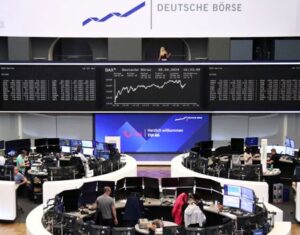Today’s trade had a more negative disposition after a big rally effort so far this month. Entering today, the S&P 500 and Nasdaq Composite were up 8.2% and 8.5%, respectively, since November 3.
With the recent runup bringing the S&P 500 close to a key technical resistance level (the 200-day moving average at 4,054), market participants have switched into consolidation-mode. Also, global growth concerns are at the forefront following reports of social unrest in China over the zero-COVID policy.
In addition to worries over global growth prospects, market participants are weighing concerns about weakening earnings growth prospects that may be on display later this week with the release of some notable economic data that includes the November Consumer Confidence, October Personal Income and Spending, November ISM Manufacturing Index, and November Employment Situation reports.
Today’s retreat, which brought the S&P 500 below 4,000, has been fairly broad in nature. Declining issues lead advancing issues by a greater than 2-to-1 margin at both the NYSE and the Nasdaq. Most of the 11 S&P 500 sectors trade down with real estate (-1.9%) exhibiting the steepest loss. The information technology (-1.7%), communication services (-1.4%), and financial (-1.4%) sectors are influential laggards. The consumer discretionary sector (+0.3%), meanwhile, is the only sector in positive territory.
Separately, New York Fed President Williams (FOMC voter) and St. Louis Fed President Bullard (FOMC voter) ostensibly aided the consolidation effort with the former saying “inflation is far too high” and the latter indicating that the Fed may be more aggressive and pursue rate hikes into 2023.
There’s been an impressive intraday reversal for WTI crude oil futures, which fell to $73.60/bbl earlier on growth concerns connected to China. Now, WTI crude oil futures are up 0.7% to $76.79/bbl, helped presumably by some short covering activity and speculation that OPEC+ could consider a production cut at next week’s meeting. This move helped the S&P 500 energy sector pare its loss from 3.1% to 1.7%.
The U.S. Dollar Index also staged an impressive reversal from its earlier low (105.36), now up 0.3% to 106.23.
There was no U.S. economic data of note today.





